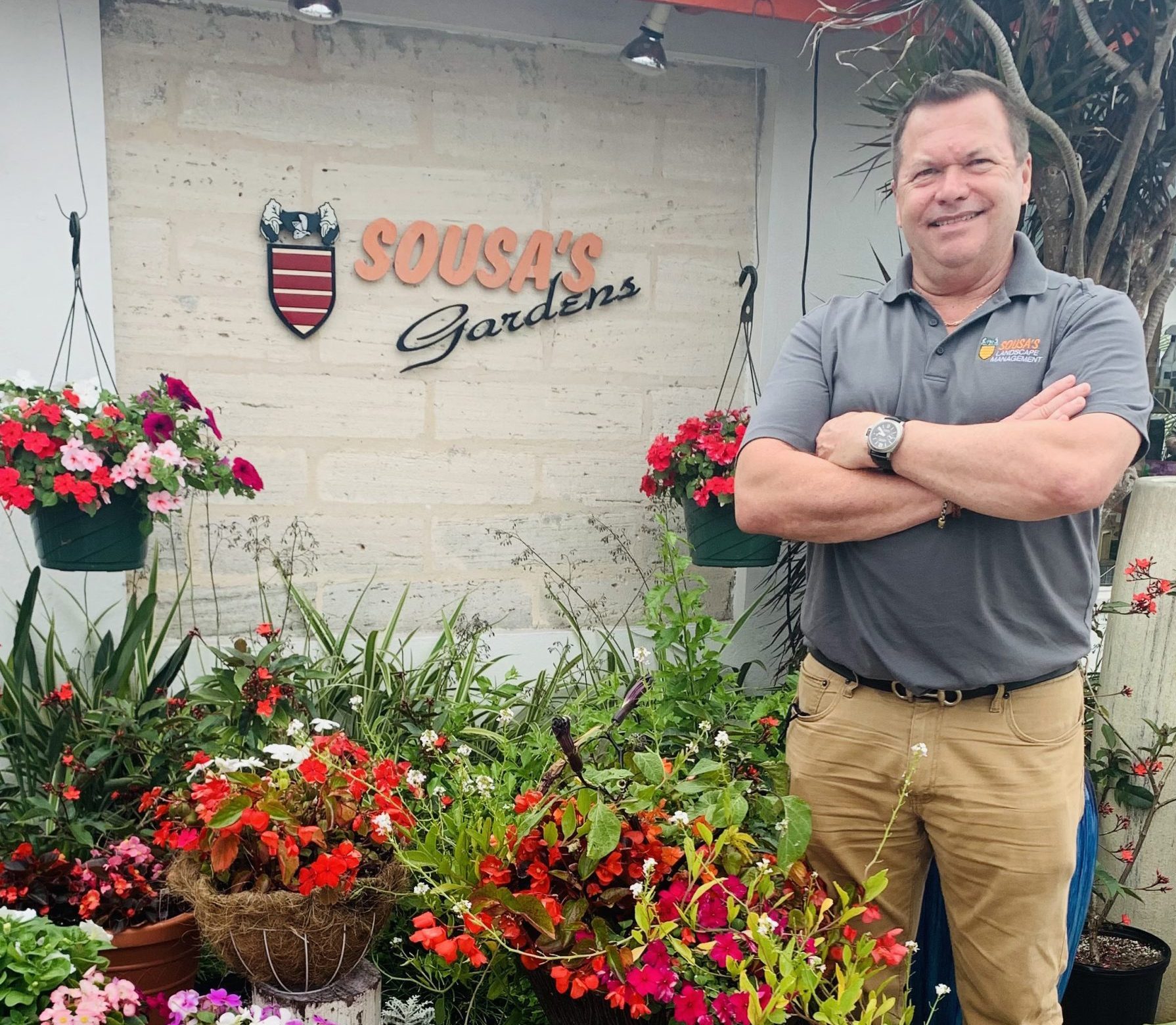by Erin Silver
When it comes to planting a garden in Bermuda it’s important to consider the impact of hurricanes on your plants. Jeff Sousa, founder of Sousa’s Landscape Management Co Ltd and Sousa’s Garden Centre, knows a thing or two about gardening in Bermuda’s unique climate.
“As we are the most northern coral island in the world and our weather is affected by the Gulf Stream, we have a sub tropical climate versus a tropical one,” he said. “Over the centuries, it has been proven repeatedly that the endemic species – Bermuda cedar, palmetto and olive wood – stand up best to the very strong hurricanes in Bermuda.”
With that being said, many other kinds of plants have been introduced to beautify Bermuda’s gardens. The allure of a magnificent garden is something Bermudians truly appreciate.
“Bermudians love to garden,” says Mr Sousa, who has seen a huge uptick in interest, particularly in the last year. “Because of the pandemic, more Bermudians are looking to grow their own fruits and vegetables than I have seen in the last half century.”
What has remained the same is that Bermudians worry about their gardens as hurricane season approaches.
“In recent years, I have noticed that the hurricanes are getting much stronger, and going forward, it is something we need to be concerned about when planning our gardens.”
He says that severe vegetative damage took place after Hurricane Emily in 1987, and Hurricane Fabian in 2003.
“Many Bermudians are now very concerned about having tall trees and palms next to their homes,” he said. “Realistically, they should have always been concerned.”
To mitigate damage, Mr Sousa recommends that residents ensure larger trees are professionally maintained by a qualified arborist. It’s also important to ensure that the right plants are selected for your garden and that you’ve planted them in the right location. Keep in mind that if you live along the water, which many in Bermuda do, you want to plant plants that are both wind and salt tolerant. If you live in a protected area, you have more options.
It’s also key to maintain plants properly.
“If you have hedges, which many of us do for privacy, pruning them correctly can make a huge difference,” says Mr Sousa. “Never use a machete. “When you hack the hedge with a machete, it leads to having a hedge which is wider at the top and narrower at the bottom. This can easily lead to the hedge toppling over in very strong winds. Also, to maintain your hedge like this leads to it being thin at the bottom, which means adequate light can’t get through.”
When you know a hurricane is imminent, don’t forget about your little plants. All containerised plants and hanging baskets can be brought into the garage or kitchen until the very severe and damaging winds pass by.
“Always make sure to secure any trash cans and loose objects on your property as in some cases they can do more damage than the wind itself. We all must realise that wind is nature’s way of pruning.”
After the hurricane goes by, there’s more work to be done.
Added Mr Sousa: “It is a very good idea to thoroughly water your plants as, in some cases, we have very dry hurricanes and the salt can be very damaging.”

